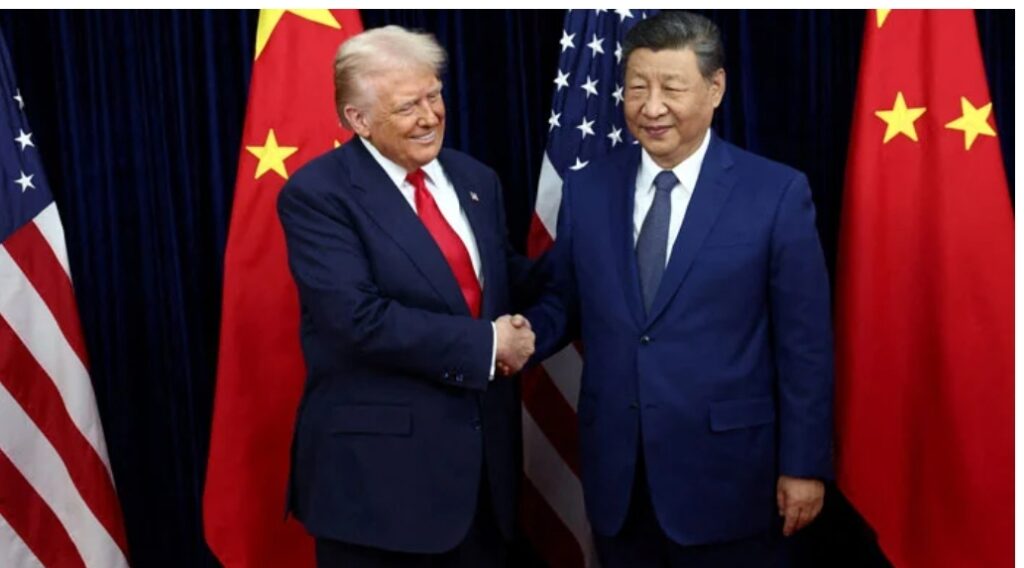By Qamar Bashir
In the midst of this domestic turmoil, President Donald J. Trump has embarked on a high-profile tour of Asia, beginning in Malaysia and extending through Japan and South Korea. His aides present the trip as a mission of global peace and partnership—a continuation of the diplomacy that earned him acclaim earlier this year for mediating between Pakistan and India, averting what could have been a catastrophic war. Yet to millions of Americans, this journey feels like an escape from the fires burning at home. While Trump collects applause and photo opportunities abroad, his country languishes in a state of economic and social unease.
The consequences of the shutdown ripple through every corner of American life. Veterans who rely on monthly stipends now face uncertainty about their next meal. Students and professors working on federally funded research are unable to continue their projects. Air-traffic safety is maintained only through the commitment of unpaid professionals, while rising tensions in major cities have forced the deployment of National Guard units in several states to control crime, manage protests, and support overstretched local agencies. On social media, images of soldiers and federal workers lining up at food banks have shocked the world—an irony in a nation that spends over $800 billion annually on defense but cannot pay its own protectors.
Economists warn that each week of the shutdown costs the economy nearly six billion dollars in lost productivity, consumer spending, and delayed payments. Should it persist into November, growth could fall below 1.5 percent, erasing the modest gains achieved earlier through tax cuts and job creation programs. For a nation built on economic momentum, such stagnation signals more than a budget dispute—it marks a systemic failure of governance. Yet, instead of focusing on legislative compromise or administrative repair, the president has chosen the path of foreign diplomacy, pursuing praise overseas while the domestic foundation trembles.
Trump’s first stop, Malaysia, symbolized America’s effort to strengthen its footprint in Southeast Asia amid the ongoing rivalry with China. He was received with ceremony and flattery, attending the ASEAN dialogue on trade realignment and security cooperation. The visit yielded pledges worth $2.9 billion in agriculture and technology investments—modest when compared to the $475 billion annual trade volume between the U.S. and ASEAN nations. Analysts at Brookings noted that Trump’s presence had more symbolic than economic value, representing visibility rather than tangible progress. From Kuala Lumpur, the president flew to Tokyo, where meetings with Prime Minister Fumio Kishida revolved around semiconductors, defense cooperation, and rare-earth supply chains. Japan, while eager to maintain its alliance with the United States, remains wary of Trump’s 25 percent tariffs on automotive exports—a policy projected to shave nearly one percent off Japan’s GDP by 2025. Despite Tokyo’s offer to expand investment in U.S. chip facilities, no substantive trade reforms were finalized.
The South Korean leg of the tour offered somewhat greater optimism. Seoul, one of Washington’s most reliable economic partners, has invested over $120 billion in U.S. manufacturing and battery plants since 2022. Trump’s visit reaffirmed commitments to green energy collaboration, though it also left Korean exporters concerned as the U.S. maintained a 15 percent tariff structure to protect domestic industries. Economists in Seoul described the talks as “diplomatic but directionless”—productive in tone but lacking strategic clarity. Trump’s itinerary, while rich in optics, delivered little in concrete benefits to either side.
Hovering over all these visits is the shadow of China. The U.S. remains heavily dependent on Beijing for more than 80 percent of rare-earth elements used in electronics, defense systems, and renewable energy production. China’s decision earlier this year to tighten export controls on these materials has sent shockwaves through American industries. Production delays, layoffs, and rising costs have become routine in sectors that form the backbone of Trump’s manufacturing revival plan. The president’s bold declaration that “America will never be held hostage by Chinese minerals” resonated with nationalist sentiment, but industry experts point out that diversification of such supply chains will take years, not months. Ironically, the very semiconductor and innovation projects designed to reduce this dependence are currently frozen under the shutdown’s budget restrictions. Thus, while Trump preaches economic independence abroad, his domestic paralysis ensures greater vulnerability at home.
The contrast between Trump’s international acclaim and his domestic disapproval is stark. His assertive executive style, once seen as a source of strength, has now paralyzed the federal apparatus. Aggressive immigration crackdowns, politically motivated deployments of the National Guard, and tariff escalations have compounded social tension. The very decisiveness admired abroad has become divisive at home. The result is a nation torn between spectacle and substance—between the image of strength and the reality of stagnation.
Donald Trump’s Asia tour has demonstrated once again his unparalleled ability to command attention—but not necessarily to deliver results. No major trade accord was signed, no defense breakthrough achieved, and no progress made in repairing America’s strained economic alliances. What the tour did produce was imagery: motorcades, banners, and adoring crowds—a spectacle that contrasts painfully with the silence of unpaid workers and the frustration of grounded researchers back home. It is often easier to change regimes abroad than to mend the fractures within one’s own system, but history remembers leaders who build stability at home more than those who chase applause abroad.
America stands at a crossroads where symbolism must yield to substance. The path forward lies not in foreign flattery but in domestic reform—restoring governance, rebuilding trust, and reigniting the economy. The world may admire Trump’s boldness, but the true test of leadership will be whether his citizens can once again find dignity in their work, faith in their institutions, and pride in their nation. For now, as the president basks in Asia’s adoration, America waits for the sound of its own revival.
Writer is Press Secretary to the President (Rtd)
Former Press Minister, Embassy of Pakistan to France
Former Press Attaché to Malaysia
Former MD, SRBC | Macomb, Michigan, USA



